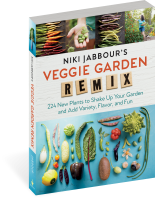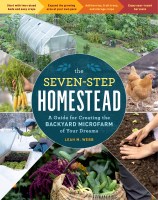How to Grow More Food in the Space You Have
Follow these 12 key guidelines to get more vegetables out of your garden with less time and energy.

The first step toward a highly productive garden is simply understanding what makes a garden successful. To get the most out of your garden, it’s important to:
- Grow for a purpose. Take the time to consider the goals of your project. Grow for the tastes you prefer and yields you can use. Make sure to have a use in mind for each crop before it goes in the ground.
- Select the best site and use it efficiently. Think ahead and place annual and perennial crops in appropriate locations. For most crops and climates, more sun is better. Lay out your garden to maximize productive space and find creative solutions for spaces outside of the main vegetable garden. Keeping a productive garden space requires using nongarden spaces in support roles.
- Plan well and keep good records. Spend time before each season to make a thorough plan of the garden. Update the plan throughout the season as you make necessary changes. Maintain an accurate record of garden tasks and what happens in the garden, and use this information to inform future plans.
- Maintain fertile soil. Successful growers say, “Care for the soil, not the crops.” Ongoing and meticulous care of the soil is essential. Soil amendment should happen several times every year.
- Know your plants. To get the most out of your crops, you must develop an understanding of the physiology, genetics, and cultural requirements of the plants. The more you know about your crops, the easier it is to increase their yields.

- Select the best crops. Choose crops and specific cultivars that will perform well in your climate. You’ll want to select varieties that are vigorous, produce well, and that you like to eat.
- Deal with pests, diseases, and weeds immediately. Closely and frequently monitoring the garden for problems allows you to deal with them before they get out of hand.
- Observe and respond. You are the best ongoing source of information about your garden. Keeping track of which varieties perform best and what pests show up and when will enable you to customize your project to your specific conditions.
- Maximize your time and energy. Develop systems and use tools that maximize efficiency by saving time and energy. Time is nearly always the most limited resource of a production gardener, so make the most of it.
- Water well. Vegetable plants need consistent and adequate water. By the time you notice signs of water stress, you’ve already reduced your overall yield potential.
- Extend and expand the seasons. Create spaces that allow you to extend planting and harvest dates earlier and later in the season. Stay organized with succession planting to grow multiple crops in each space throughout the year.
- Harvest and store crops smartly. Know the appropriate time of day and stage of growth to harvest your crops. Pay attention to postharvest care for maximum quality and storage life.
Excerpted from Grow More Food © Colin McCrate and Brad Halm. Photos © Hilary Dahl.
Along with chapters devoted to the Five Tenets of a Productive Gardener (Plan Well to Get the Most from Your Garden; Maximize Production in Each Bed; Get the Most out of Every Plant; Scale up Tools and Systems for Efficiency; and Expand and Extend the Harvest), the book contains interactive tools that home gardeners can use to assist them in determining how, when, and what to plant; evaluating crop health; and planning and storing the harvest. For today’s vegetable gardeners who want to grow as much of their own food as possible, this guide offers expert advice and strategies for cultivating a garden that supplies what they need.












